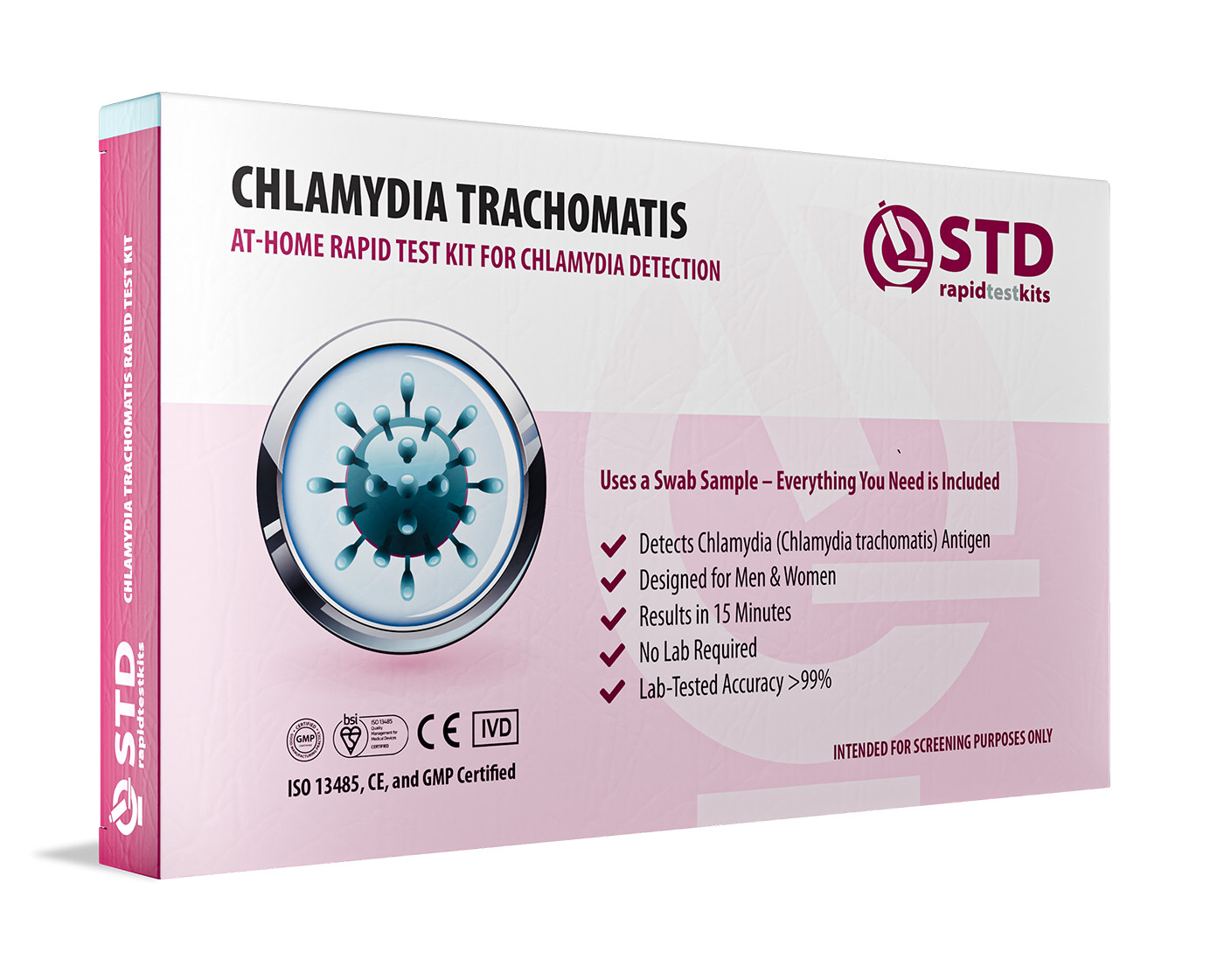Where “Popping a Pill After” No Longer Works
For decades, the sexual health playbook was simple: if it burns, book a clinic visit, swallow a prescription, and voilà, back to business. But Neisseria gonorrhoeae mutated faster than our pharmaceutical pipeline. The latest CDC update lists just one reliably effective injectable, ceftriaxone, after resistance crushed fluoroquinolones and oral cefixime. Public-health labs now track “MIC creep,” a chilling term for slowly rising antibiotic doses required to kill the bug. Meanwhile, community clinics report patients needing follow-up cultures because the first shot failed. The age of reflexive, easy cures is officially over.
People are also reading: Antibiotics Might Not Be Enough: The Race for a Chlamydia Shot
Pleasure vs. Panic: Why Condom Fatigue Set In
Let’s be honest: condoms are relationship gold when new, a mix of responsibility and glossy “ribbed” marketing. Fast-forward a few months (or a few partners) and they can feel like mood-killers. Researchers label this “condom fatigue,” a steady decline in use, especially among Gen-Z who grew up hearing HIV is manageable and chlamydia is “curable.” Add PrEP’s success against HIV, and condoms lost their fear-factor halo. The result? U.S. surveillance shows condom use in teens sliding from 59 % to 54 % in a decade, exactly when AMR STIs needed that latex shield most.
Doxy-PEP: Miracle Morning-After or AMR Time Bomb?
Enter doxycycline post-exposure prophylaxis (doxy-PEP), a 200-mg dose within 72 hours of sex shown to slash chlamydia and syphilis rates in high-risk MSM cohorts. Sounds dreamy until microbiologists warn that blanket doxy use could turbocharge resistance in gonorrhea, acne bacteria, even malaria parasites. The World Health Organization’s 2024 position? Proceed only in pilot programs with rigorous surveillance. Translation: don’t self-prescribe from that leftover acne script.
The Super-Gonorrhea Headlines: Hype vs. Harsh Reality
Tabloids scream “Super-Gonorrhea” like a Netflix thriller, but the real horror is slower, quieter. Each “treatment-failure” case forces clinicians to mix last-resort drugs (think gentamicin shots paired with oral azithromycin). Side-effects worsen, costs climb, and lab confirmation lags behind dating-app swipe speeds. In January 2025 Massachusetts documented America’s first high-level ceftriaxone-resistant strain, the patient needed hospitalization, IV ertapenem, and partner outreach across state lines. That isn’t clickbait; it’s the new baseline in a globalized hook-up economy.
Check Your STD Status in Minutes
Test at Home with RemediumChlamydia Test Kit

 For Men & Women
For Men & Women Results in Minutes
Results in Minutes No Lab Needed
No Lab Needed Private & Discreet
Private & DiscreetOrder Now $33.99 $49.00
Quick-Fix Culture Meets Antibiotic Stewardship
The phrase “take all your pills” once dominated pharmacy bag inserts. Stewardship in 2025 means something tougher: not taking antibiotics unless they’re absolutely indicated, even if that means waiting 48 hours for nucleic-acid amplification test (NAAT) results. Clinics are doubling down on point-of-care diagnostics to trim that wait, think 30-minute molecular gonorrhea tests paired with resistance-marker detection. While tech catches up, consumers can lighten the AMR load by skipping “just-in-case” antibiotics and opting for rapid self-testing before the next date night.
From Swipes to Surveillance: The New Rules of Partner Notification
Ghosting may be a dating hobby, but it’s a public-health nightmare when a resistant gonorrhea diagnosis lands. Early partner notification stops outbreaks before they snowball into clusters of untreatable cases. Health departments now pair sex-positive text templates (“Hey! Quick heads-up: I tested positive for a resistant STI, here’s a free same-day testing link”) with AI-assisted “cluster busting” that cross-references phone numbers and dating-app handles. Notification rates jump from 46 % to 71 % when tech meets empathy.
Pleasure-Positive Messaging That Doesn’t Sugarcoat Science
Fear-laden posters worked in the ’80s HIV era, but Gen-Z scrolls past doom. Today’s campaigns lead with neon art and cheeky slogans, “Feel Everything, Fear Nothing. Test First.”, while a QR code links to live resistance maps. Focus groups show 60 % higher engagement when pleasure headlines the message and science sits one click away. Bedroom takeaway: open with desire (“I’m into feeling good and staying healthy, want to test together?”) instead of leading with bacteria horror stories.

People are also reading: Think One Antibiotic Fixes All STDs? Think Again
Dating Apps, PrEP, and the AMR Blind Spot
PrEP crushed HIV fear but birthed complacency toward bacterial STIs. MSM on PrEP test more often for HIV yet less for gonorrhea or chlamydia, assuming antibiotics still fix everything. Apps are finally catching up: Grindr’s 2025 update pushes city-level AMR alerts. If your app doesn’t nudge, self-nudge: calendar reminders every three months or after any condom-less hook-up.
Youth Condom Decline: What TikTok Teaches Teens About “Raw” Culture
#RawDog and #CardboardFeel rake in millions of views, glamorizing condom-less sex as “authentic.” Under-25s already shoulder half the world’s chlamydia burden, and azithromycin, its go-to cure, is losing edge as AMR spreads. Schools mixing pleasure-centric demos (school-colored condoms on cucumbers) with blunt AMR storytelling (“Imagine chlamydia you can’t cure by prom”) report a 15 % rebound in condom use. The winning script blends flesh-feel fantasy with lab-coat realism, no scare tactics, just facts with flair.
AMR Hotspots: Travel, Tourism, and Sex Abroad
Catching flights often means catching new strains, resistant ones. The WHO’s 2024 surveillance map shows coastal party hubs like Phuket, Ibiza, and Cancún turning into gonorrhea MIC hot-zones. Meanwhile, backpacker forums still push “just grab azithro at the border pharmacy.” Bad move: self-medicating with half-dose antibiotics fuels resistance. Your travel kit should pack two essentials: quality condoms (heat-stable latex, not souvenir-shop novelty) and a compact Gonorrhea Rapid Test Kit for post-vacation peace of mind.
Check Your STD Status in Minutes
Test at Home with Remedium6-in-1 STD Rapid Test Kit

 For Men & Women
For Men & Women Results in Minutes
Results in Minutes No Lab Needed
No Lab Needed Private & Discreet
Private & DiscreetOrder Now $119.00 $294.00
For all 6 tests
Layered Protection: Condoms, Testing, and Beyond
If AMR has a kryptonite, it’s redundancy. Picture your protection like a club bouncer team: condoms at the door, routine rapid tests patrolling the floor, and honest disclosure handling VIP entry. Each layer covers the gaps of the others. Break a condom? Your standing quarterly test catches early infection. Forgot to test? Stewardship means limiting partners until you do. Public-health modeling shows that adding home NAAT testing to condom use can cut gonorrhea prevalence by 28 % even in moderate-resistance scenarios.
The Cost of Complacency: Economic & Emotional Fallout
Beyond physical pain, resistant STIs drain wallets. A single treatment-failure can run $800–$1,500 in clinic fees, specialty antibiotics, and follow-up cultures, costs rarely covered by basic insurance. Factor in missed work, partner anxiety, and relationship strain, and the price tag dwarfs a $40 home kit and a box of premium condoms. Emotional fallout matters too: untreated infections jeopardize fertility, and shame spirals fuel mental-health struggles. Prevention is cheaper than regret, financially, physically, and emotionally.
Future-Proofing Pleasure: Innovation on the Horizon
All isn’t doom. Start-ups are racing to outsmart AMR: on-demand mRNA vaccines for gonorrhea are in Phase II trials; condom makers are layering graphene for thinner yet stronger feel; and CRISPR-based point-of-care tests could detect resistance markers within 15 minutes. Until these land, today’s best hack is old-school honesty paired with new-school tech, share results screenshots, schedule couples-testing nights, and treat test kits like lube: always in the drawer.
No Quick Cure, No Quick Quit: Keeping Hook-Ups Hot & Healthy
Here’s the take-home: AMR doesn’t banish casual sex; it just demands smarter choreography. Slip a condom on like lighting a candle, part of the vibe, not a buzzkill. Normalize the line, “I’ve got a test kit, wanna do it together after coffee?” Laugh, swab, enjoy foreplay while the timer counts down. The goal isn’t sterile fear; it’s fierce stewardship so that antibiotics stay potent and hook-ups stay fun.

People are also reading: Debunking Five Myths About Drug-Resistant STIs
FAQ
1. How common is drug-resistant gonorrhea?
About 55 % of U.S. isolates already show reduced susceptibility to at least one antibiotic class, according to the CDC’s 2025 data.
2. Can condoms still protect if resistance rises?
Absolutely, AMR changes treatment, not transmission. A well-fitted condom blocks any strain.
3. Is doxy-PEP safe to use weekly?
Current WHO guidance limits doxy-PEP to research settings; weekly DIY use risks broader resistance.
4. What if a partner refuses testing?
Set boundaries: no test, no sex, or stick to barrier methods only.
5. Do rapid kits detect resistant strains?
Most diagnose infection, not resistance. Positive NAAT results mean you still need clinic culture for susceptibility.
6. Are home STI kits accurate?
Quality NAAT kits boast 95–98 % sensitivity, close to clinic standards.
7. How often should casual daters test?
Every three months or after any new condom-less partner.
8. Can alcohol wipes replace condoms?
No. Surface cleaning doesn’t stop internal bacterial transmission.
9. Will a gonorrhea vaccine fix AMR?
It could prevent many infections, but resistant strains will persist until uptake is high.
10. Where can I buy reliable rapid kits?
Visit STD Rapid Test Kits for discreet shipping worldwide.
Sources
1. CDC – Drug-Resistant Gonorrhea Overview
2. CDC Adult Gonorrhea Treatment Guidelines (2024)
3. WHO – Addressing Antimicrobial Resistance in STIs Hub (2024)
4. The Lancet Infectious Diseases – “Stopping Gonorrhoea’s Descent Toward Untreatability” (2025)
5. BMJ (Sexually Transmitted Infections) – Doxy-PEP Awareness & AMR Concerns (2024)










